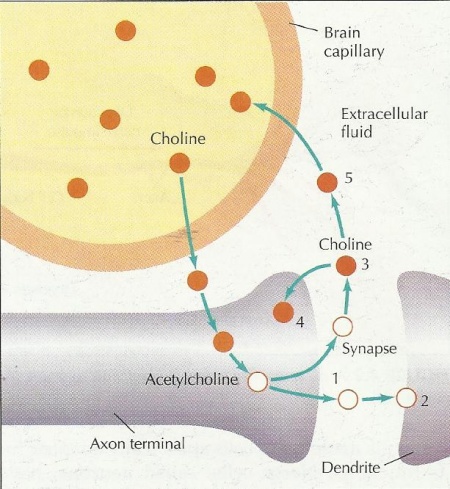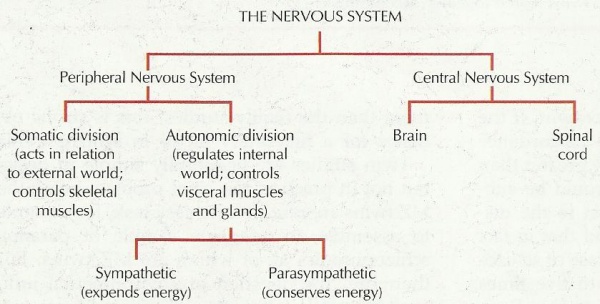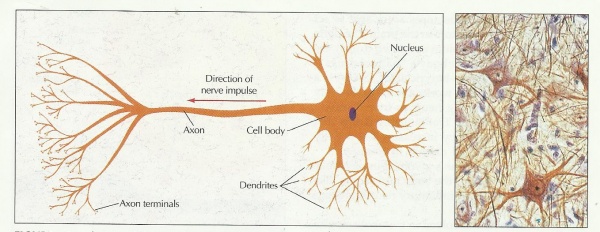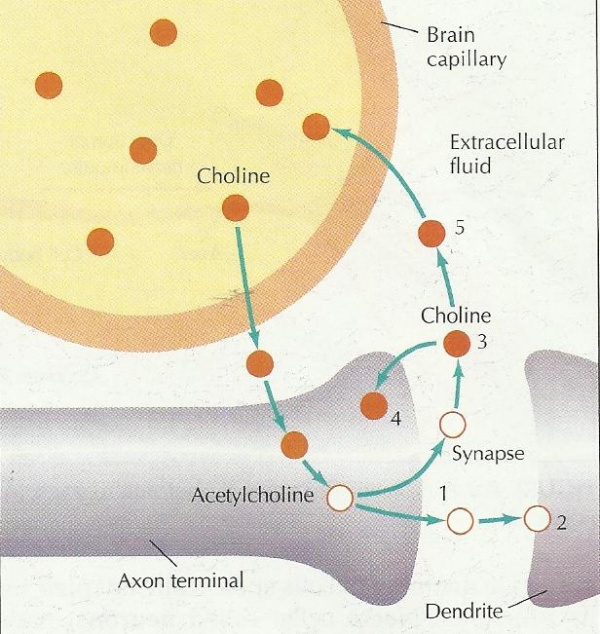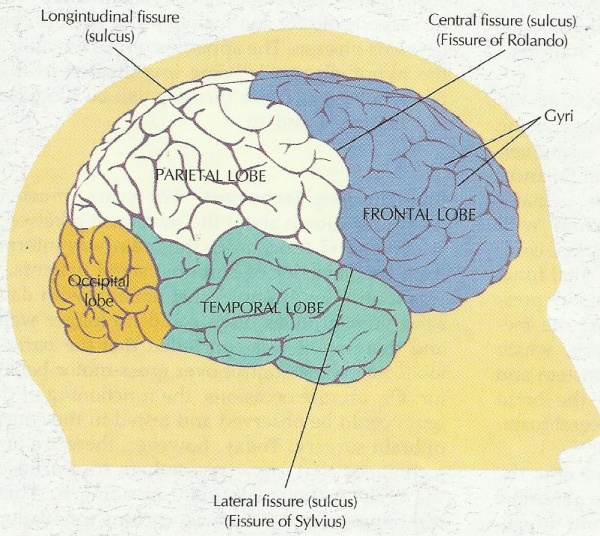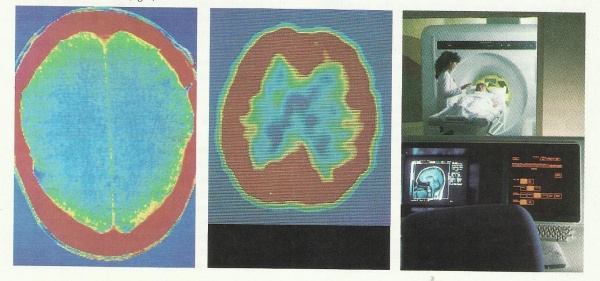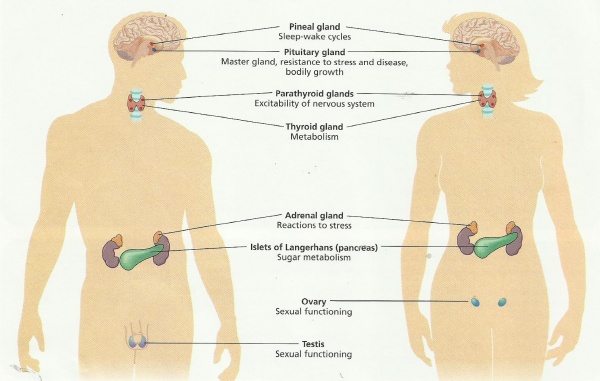Samyukyābhidhamahŗdaya - The Brain Creator of our World: Buddhist Foundations and Theories In Modern Science
Samyukyābhidhamahŗdaya
The Brain Creator of our World
Buddhist Foundations and Theories
In
Modern Science
Edited and summarized by
Vira Avalokita, Sthera
Chapter One
SANGYUKTĀBHIDHARMA HRIDAYA-ŚĀSTRA
Review of the Science of the Brain
Long before recorded history, people associated behavior with things going on inside the head. But the brain does not permit easy access, and therefore theories about the organic bases of behavior remained in the realm of speculation. This is most noted in many Surtas of ancient times. Today, unlike the meditation techniques of centuries past, these speculations that were formed by introspection of a selected few are now being transformed by concrete evidence. With the help of advanced technology, researchers can now flip a switch and see a moving picture of a living brain as it is functioning, and can search such pictures for blood clots, tumors, and other possible causes of emotional or behavior problems.
The brain then is no longer the dark territory that it used to be in religion and Buddhist folk superstition. The same is true of other biological functions that affect our thoughts and emotions for now Humanity is freeing itself from pseudoscience of religions that had gods and evil spirits that exerted their over humans. Perhaps the greatest source of optimism and excitement in the field of Buddhist Psychology is the tremendous advance in the study of the biological bases of behavior over the ancient hypotheses of reincarnation and karma of the past ages. And this advance in turn has led to a tremendous rise in prestige for the Buddhist neuroscience perspective, the source of these breakthroughs.
Buddhism based upon neuroscience perspective is constant with the Buddhist tradition of the Scientific Method of the four truths and this only is that reveals facts and not the so called intuitional meditative or superstitious rituals with mantras as found in the past. These perspectives focus on the organic determinants of behavior that was unknown in the ancient days of gurus. It is not a single, general theory, but rather a collection of specific theories about specific pathologies. Most of this writing will devote itself and describe the kinds of biological mechanisms—the genes, the nervous systems, the endocrine system— now investigated by biological researchers in psychology of behavior that is considered abnormal and to give some picture of their methods of investigation.
The most complex object yet discovered anywhere in the universe is the organ that fills the space between our ears. Although weighing only about 1300 to 1500 grams (three to four pounds), the human brain contains over 11 billion specialized nerve cells, or neurons, capable of receiving, processing, and relaying the electrochemical pulses on which all our sensations, actions, thoughts, and emotions depend. But it is not the sheer number of neurons alone that is most striking about the brain, but how they are organized and interconnected. And to understand how neurons communicate with each other we first must consider their typical structure.
Although there are many different types of neurons, almost all of them share certain common features as portrayed in figure below. The cell body, or soma, contains the nucleus of the neuron, which in turn houses a complete set of the organism's genes. The nucleus is surrounded by cytoplasm, the chemical "soup" of the cell that contains the organelles essential to the neuron's functioning and metabolism.
The ways in which neurons are specialized to carry out their communicative function is made evident by closer examination of the appendages they sport, that is, their dendrites and axons. The dendrites can be likened to a bushy antenna system that receives signals from other neurons. When a dendrite is stimulated in a certain way, the neuron to which it is attached suddenly changes its electrical polarity and may fire, sending a signal out along its single axon where it may be picked up by the dendrites of other neurons. Considering the small size of the neuron's body, the length of an axon can be considerable, up to several meters in the neck of the giraffe. Thus the firing of one neuron can influence the firing of another one a considerable distance away.
For one neuron to influence another, the two must be connected, and this is accomplished by junctions called synapses (figure below). These synaptic junctions usually connect the axon of one neuron with the dendrites of another, a typical neuron in the cortex of the human brain having about 10,000 synapses. The synapses therefore constitute an exceedingly complex wiring system that surpasses by many orders of magnitude the complexity of even the most advanced supercomputers. It is this organization of connections both within the skull and to more distant sense organs and muscles that gives the brain its amazing abilities. Indeed, it is widely believed today by neuroscientists, psychologists, and even philosophers that all of the knowledge the human brain contains--from being able to walk to the ability to perform abstract scientific and mathematical reasoning--is a function of the connections existing among the neurons.
How this unfathomably complex organization allows us to perceive, behave, think, feel, and control our environment presents us with what may be the most striking puzzle of fit we have yet encountered. The puzzle actually has three aspects. First, we must consider how over millions of years the primitive nervous system of our early ancestors evolved into an organ that has made it possible for the human species to become the most adaptable and powerful organism on the planet--living, thriving, and modifying the environment (both intentionally and unintentionally) from the tropics to the polar regions, and perhaps soon in outer space and on other planets. Second, we must understand how it is possible for the intricate structure of the brain to develop from a single fertilized egg cell. Finally, we must try to comprehend how the mature brain is able to continue to modify its own structure so that it can acquire new skills and information to continue surviving and reproducing in an unpredictable, ever-changing world. In this chapter we will consider the research and theories that are beginning to provide answers to these questions. Indeed, the 1990s has been referred to as "the decade of the brain," as scholars and scientists in fields from philosophy to molecular neurobiology focus their energies on understanding humankind's ultimate inner frontier.
Chapter Two
The Evolution of the Brain
Neurons are quite distinct from other body cells in ways that make them suited to their specialized role of signal processing and communication, but it is not too difficult to see how they could have evolved from less specialized cells. All living cells are surrounded by a cell membrane that separates the special chemical composition of its interior from that of the external world. This difference in chemical composition results in a small electrical potential between the inside and outside of the cell, in much the same way that a voltage exists between the two sides of a battery. When a part of a cell's membrane is disturbed in a certain way, it loses its electrical potential, becoming depolarized at the site of the disturbance. This sudden change in electrical potential can itself be a disturbance, causing additional depolarizations along the membrane. In most cells, such depolarization would not spread far, certainly not to neighboring cells. But a few changes in the shape and arrangement of cells (in just the way that neurons are fashioned) permits depolarization to propagate quickly from one neuron to the next, and allows it to travel quickly as an electrochemical signal from one end of an animal to the other.
An example of a simple nervous system is provided by the jellyfish (or Medusa). The jellyfish's nervous system forms an undifferentiated network and serves primarily to coordinate the animal's swimming motions. Since the jellyfish's skirt must open and contract in a coordinated manner for the animal to move through the water, its nervous system serves as a simple communications network making it possible for all parts of the skirt to open repeatedly and then contract at the same time.
Worms are the simplest organisms to have a central nervous system, which includes a distinct brain that is connected to groups of neurons organized as nerve cords running along the length of its body. This more complicated nervous system allows worms to exhibit more complex forms of behavior. An anterior brain connected to a nerve cord is the basic design for all organisms with central nervous systems, from the earthworm on the hook to the human on the other end of the fishing rod. But although we can discern a separate brain in worms, it is not the case that the brain is the sole "commander" of the animal that the rest of the nervous system and body obeys. Indeed, even with its brain removed, worms are able to perform many types of behaviors, including locomotion, mating, burrowing, feeding, and even maze learning. As we move to insects we find increased complexity in all aspects of the brain and nervous system. So-called giant fiber systems (also found to some extent in worms and jellyfish) that allow rapid conduction of nerve impulses connect parts of the brain to specific muscles in legs or wings. Such connections permit the cockroach to dart away as soon as it senses the moving air preceding a quickly descending human foot. The brain itself is typically divided into three specialized segments, the proto-cerebrum, the deuto-cerebrum, and the trito-cerebrum. In addition, insects possess a greater variety of sensory receptors than any other group of organisms, including vertebrates that are sensitive to the odors, sounds, light patterns, texture, pressure, humidity, temperature, and chemical composition of their surroundings. The concentration of these sensory organs on the insect's head provides for rapid communication with the tiny yet capable brain located within.
Although minuscule by human standards, the range of abilities made possible by insect brains is impressive. These creatures show a remarkable variety of behaviors for locomotion, obtaining food, mating, and aiding the survival of their offspring. They can crawl, hop, swim, fly, burrow, and even walk on water. The female wasp hunts down a caterpillar, paralyzes it with her venom, and then lays its egg on the motionless prey so that her offspring will have a fresh and wholesome meal immediately after hatching. Leafcutter ants harvest leaves and bring them into their nest where they use them to cultivate indoor gardens of edible fungus. Honeybees live in social communities where there is a strict division of labor, and where food gathering worker bees perform a special dance to communicate the location and richness of food sources to their hive-mates. It is the evolution of their brains, together with the complementary evolution of their other body parts that make insects the most abundant multicellular organisms on our planet.
The brain becomes both much larger and still more complex as we move to vertebrates such as fish, amphibians, and reptiles. The spinal cord, now protected within the vertebrae of the backbone, has become primarily a servant of the brain, a busy two-way highway of communication with fibers segregated into descending motor pathways and ascending sensory ones. The brain itself is now composed of a series of swellings of the anterior end of the spinal cord (the brain stem), the three major ones making up the three major parts of the vertebrate brain: the hindbrain, midbrain, and forebrain. From the hindbrain sprouts a distinctive structure, the "cerebellum" (Latin for "little brain").
Among mammals, the brain keeps its three major components, however, with two new structures. The neocerebellum ("new cerebellum") is added to the cerebellum, looking much like a fungal growth at the base of the brain, and the neocortex ("new cortex") grows out of the front of the forebrain. In most mammals, these new additions are not particularly large relative to the brain stem. In primates they are much larger, and in the human they are so large that the original brain stem is almost completely hidden by this large convoluted mass of grey neural matter. In keeping with this remarkable increase of neocerebellar and neocortical tissue, humans enjoy the largest ratio of brain weight to body weight of any of earth's creatures.
It is not possible to know exactly why the human brain evolved as it did, but consideration of the structural evolution of the brain and results of comparative research on human and nonhuman brains provides some useful clues. It is now believed that during the long evolution of our brain, nervous systems changed in four principal ways.
First, they became increasingly centralized in architecture, evolving from a loose network of nerve cells (as in the jellyfish) to a spinal column and complex brain with impressive swellings at the hindbrain and forebrain. This increasingly centralized structure also became increasingly hierarchical. It appears that newer additions to the human brain took over control from the previous additions and in effect became their new masters. Accordingly, the initiation of voluntary behavior as well as the ability to plan, engage in conscious thought, and use language depends on neocortical structures. Indeed, the human neocortex can actually destroy itself if it wishes, as when a severely depressed individual uses a gun to put a bullet through his or her skull.
Second, there was a trend toward encephalization, that is, a concentration of neurons and sense organs at one end of the organism. By concentrating neural and sensory equipment in one general location, transmission time from sense organs to brain was minimized. Third, the size, number, and variety of elements of the brain increased. Finally, there was an increase in plasticity, that is, the brain's ability to modify itself as a result of experience to make memory and the learning of new perceptual and motor abilities possible.
One way of understanding the evolution of the human brain is to see it as the addition of higher and higher levels of control. The function of animal and human behavior can be understood as the control of perceptions, with perceptions corresponding to important aspects of the environment. For a sexually reproducing organism to survive and leave progeny, it must be able to control many different types of perceptions, that is, sensed aspects of its environment. At a minimum, it must be able to find food, avoid enemies, and mate. But as life evolved, the environment of our ancestors became more complex due to increasing numbers of competing organisms. So it would have been of considerable advantage to be able to perceive and control increasingly complex aspects of this environment. The bacterium E. coli can control its sensing of food and toxins only in a primitive way; organisms with more complex brains are able to sense and control much more complex aspects of their surroundings.
This capacity for increased environmental control is nowhere more striking than in our species. Using the advanced perceptual-behavioral capacities of our brain together with our culturally evolved knowledge of science and technology, we can visit ocean floors, scale the highest peaks, and set foot on other worlds. But can the most complex human abilities and mental capacities be explained by natural selection? Our brain has certainly not changed appreciably over the last couple of hundred years, and yet we can solve mathematical, scientific, technological, and artistic problems that did not even exist a hundred years ago. So how could natural selection be responsible for the striking abilities of today's scientists, engineers, and artists?
This is actually the same problem that troubled Alfred Russel Wallace, and despite being an independent co-discoverer of natural selection, he could not, for example, imagine how natural selection could account for Africans' ability to sing and perform European music, since nothing in their native environment could have selected for such an ability. Consequently, for him the brain could only be a creation provided to us by God. We now know that in his embrace of this providential explanation, Wallace failed to realize that natural selection can lead to new abilities unrelated to those that were originally selected.
To use an example from technological evolution, the first personal computers were used to perform financial calculations in the form of electronic spreadsheets. However, these same machines with the proper software could also be used for word processing, telecommunications, computer games, and many other purposes, even though they were not originally designed with these functions in mind. A classic example of this phenomenon of functional shift in biological evolution is the transformation of stubby appendages for thermoregulation in insects and birds into wings for flight. In the same way, selection pressure was undoubtedly exerted on early hominids to become better hunters. The ability to understand the behavior of other animals and organize hunting expeditions must have been very important in the evolution of our species. And the increasingly complex and adapted brain thus selected would have made other skills possible, such as making tools and using language, traits that in turn could become targets for continued natural selection. This transformation of biological structures and behaviors from one use to another was given the unfortunate name of pre-adaptation by Darwin, unfortunate since it can too easily be misunderstood to imply that somehow evolution "knows" what structures will be useful for future descendants of the current organisms.
American evolutionary paleontologist Stephen Jay Gould provided a better term for this phenomenon--expatiation. He made a major contribution to our understanding of evolution by insisting that we distinguish adaptation, the evolutionary process through which adapted complex structures and behaviors are progressively fine-tuned by natural selection with no marked change in the structure's or behavior's function, from exatantion, through which structures and behaviors originally selected for one function become involved in another, possibly quite unrelated, function. Exatantion makes it difficult if not impossible to understand why our brain evolved as it did. Although the brain allows us to speak, sing, dance, laugh, design computers, and solve differential equations, these and other abilities may well be accidental side effects of its evolution. As Gould and his associate Virba cautioned:
. . . current utility carries no automatic implication about historical origin. Most of what the brain now does to enhance our survival lies in the domain of expatiation--and does not allow us to make hypotheses about the selective paths of human history. How much of the evolutionary literature on human behavior would collapse if we incorporated the principle of expatiation into the core of our evolutionary thinking?
But although we may never know the actual events and specific selection pressures responsible for our brain power, we have no scientific reason to believe that evolution could not have fashioned our brain through natural selection. The fact is that living organisms today have nervous systems and brains ranging from quite simple to amazingly complex are compelling evidence that our brain evolved through forgotten ancestors in progressive stages from simple to complex. Somehow, as a part of this evolutionary process, the most remarkable and mystifying of all natural phenomena came into being--human consciousness.
Chapter Three
The Development of the Brain
From this evolutionary perspective, one might be led to conclude that our brain in all its striking adapted complexity is an inherited legacy of biological evolution. That once evolved it is thereafter provided to each individual by good old natural selection, specified in all its fine detail in the genome and transmitted through the generations from parent to offspring.
This type of genetically providential thinking of course is selectionist from the viewpoint of biological evolution, but nonetheless providential at the level of the individual organism. It can be seen in the pioneering work on brain development and function of Roger Sperry for which he shared a Nobel Prize in 1981. This research in the 1950s involved disturbing the normal location of nerve fibers in the developing brains of fish and rats. For example, nerve fibers that normally connect the top part of the fish's retina with the bottom part of the brain, called the optic tectum, were surgically removed and reconnected to the top part of the optic tectum. Despite this modification, the nerve grew back to its normal position in the brain. Similar experiments carried out by other researchers on rats indicated that fibers that innervate muscles also "knew" to which muscle they should be attached and made their proper connections despite surgical disturbances. This led Sperry to conclude that the connections of the nervous system are completely specified in the organism's genes. As his former student Michael Gazzaniga explains:
- “In the original Sperry view of the nervous system, brain and body developed under tight genetic control. The specificity was accomplished by the genes' setting up chemical gradients, which allowed for the point-to-point connections of the nervous system.”
But there is a vexing problem with the notion that the genome provides complete information for the construction of the nervous system of humans and other mammals. It is estimated that just the human neocortex alone has about 1015 (one followed by 15 zeros, or one thousand million million) synapses. Since the human genome has only about 3.5 billion (3.5 x 109) bits of information (nucleotide base pairs), with 30% to 70% of these appearing silent, some neural and molecular scientists have concluded that our genes simply do not have enough storage capacity to specify all of these connections, in addition to including information on the location and type of each neuron plus similar information for the rest of the body. The problem is not unlike trying to save a document made up of 100 million characters on a computer disk that can hold only 1.4 million characters.
Once a nerve cell has become differentiated it does not divide anymore. A single nucleus, with the same DNA, must serve an entire lifetime for the formation and maintenance of tens of thousands of synapses. It seems difficult to imagine a differential distribution of genetic material from a single nucleus to each of these tens of thousands of synapses unless we conjure up a mysterious "demon" who selectively channels this material to each synapse according to a pre-established code! The differential expression of genes cannot alone explain the extreme diversity and specificity of connections between neurons as Changeux noted.
Additional understanding of the relation between the genome and the nervous system can be gained by considering Daphnia magna. Commonly referred to as the water flea or daphnia, this small fresh-water crustacean is familiar to many aquarium owners since it is relished by tropical fish. But what makes the daphnia interesting for our current purposes is that when the female is isolated from males, she can most conveniently reproduce by the asexual process of parthenogenesis, giving birth to genetically identical clones. In addition, the daphnia has a relatively simple nervous system that facilitates its study. If its genome completely controlled the development of its nervous system, it should be the case that genetically identical daphnias should have structurally identical nervous systems. However, examination of daphnia’s eyes using the electron microscope reveals that although genetically identical clones all have the same number of neurons, considerable variation exists in the exact number of synapses and in the configurations of connections leading to and away from the cell body of each neuron, that is, the dendritic and axonal branches. As we move to more complex organisms, the variability of their nervous systems increases. This provides clear evidence that the structure and wiring of the nervous system are not the result of following a detailed construction program provided by the genes.
How then is the brain able to achieve the very specific and adapted wiring required to function in so many remarkable ways? For example, how does a motor neuron know to which particular muscle fiber it should connect? How is a sensory neuron in the visual system able to join itself to the correct cell in the visual cortex located in the occipital lobe of the brain? If this detailed neuron-to-neuron connection information is not provided by the genes, whence does it come?
The first clues to solving this puzzle go back to 1906 when it was observed that in embryonic nerve tissue, some neurons did not stain well and appeared to be degenerating and dying. Since it had been assumed that in a developing embryo, nerve cells should be increasing in number and not dying off, this finding was somewhat surprising. But nerve cell death in the developing nervous system has since been observed repeatedly. The extent to which it occurs was dramatically demonstrated by Viktor Hamburger. He found that in a certain area of the spinal cord of the chicken embryo over 20,000 neurons were present, but that in the adult chicken only about 12,000, or 60%, of these cells remained. Much of this neuronal death occurs during the early days of the embryo's existence. Nerve cells continue to expire thereafter, albeit at a slower pace.
A particularly striking example of neuronal elimination in development involves the death of an entire group of brain cells: Most frequently, neuron death affects only some of the neurons in a given category. However, in one case . . . a whole category of cells dies. These particular neurons of layer I, the most superficial layer of the cerebral cortex, characteristically have axons and dendrites oriented parallel to the cortical surface rather than perpendicular to it, like the pyramidal cells. These cells were first observed in the human fetus but have since been found in other mammals. Purely and simply, they disappear in the adult. (Changeux (1985, p. 217).
But the death of obviously useless brain cells cannot account for the specific connections that are achieved by the remaining neurons. For example, the visual cortex of cats and monkeys has what are called ocular dominance columns within a specific region known as cortical layer 4. In any one column of this brain area in the adult animal we find only axons that are connected to the right eye, while in the neighboring column are located only axons with signals originating from the left eye. So not only must the axons find their way to a specific region of the brain, which can be quite far from where their cell bodies are located, they must also find a specific address within a certain neighborhood.
The ability of axons to connect to the appropriate regions of the brain during development has been studied in careful detail since the beginning of this century. Axons grow in the brain like the stem of a plant. At the end of the growing axon is found a growth cone which was described by Spanish neuroscientist Ramón y Cajal in 1909 as "a sort of club or battering ram, possessing an exquisite chemical sensitivity, rapid amoeboid movements, and a certain driving force that permits it to push aside, or cross, obstacles in its way. . . until it reaches its destination." Although the exact mechanisms by which this is accomplished are still unknown, it appears that the growth cone is sensitive to certain chemicals along its path that are released by its target region. In this way visual system axons originating in the lateral geniculate nucleus find their way to cortical layer 4 in the occipital lobe of the brain in much the same way that a police bloodhound is able to sniff out the escaped prisoner.
But although these growth cones lead their axons to the proper region of the brain (or muscle in the case of motor neurons), they cannot lead them to the precise target addresses. For a particular growth cone, it appears that any cell of a particular type will serve as a target. Indeed, in the newborn cat, ocular columns receive axons from both eyes, not just from one or the other, as in the adult brain. For this final and important fine-tuning to be achieved (on which stereoscopic vision depends), many of the original terminal connections of the axon must be eliminated. In the case of vision, all axonal connections from the wrong eye are eliminated, and those from the correct eye are retained. In the case of motor systems that initially have many-to-many connections between motor neurons of the spinal column and muscle fibers (that is, many motor neuron axons connected to same muscle fiber, and many muscle fibers connected to the same axon), the mature animal possesses a much more finely ordered system with each muscle fiber enervated by one and only one motor neuron. The mammalian nervous system changes from birth to maturity from a degenerate system having many redundant and diffuse connections, to a much more finely tuned system that makes both adapted complex behaviors and perceptions (such as stereoscopic vision) possible.
So now the question naturally arises, how does the nervous system know which connections to retain and which to eliminate? The work of David Hubel and Torsten Wiesel in the 1970s (both of whom shared a Nobel Prize with Sperry in 1981) provided the first clue. They conducted their ground-breaking experiments by closing the lid of one eye of newborn cats, and found that even one week without sight altered the connections of the eyes to layer 4 of the occipital cortex. Axons carrying nervous signals from the closed eye made fewer connections with the cortex, whereas axons from the open eye made many more connections than was normal. This suggested that visual system axons compete for space in the visual cortex, with the result of the competition dependent on the amount and type of sensory stimulation carried by the axons. Subsequent research by others using drugs to block the firing of visual system neurons, as well as artificial stimulation of these neurons, showed that it is not neural activity per se that results in the selective elimination of synapses, but rather that only certain types of neural activity result in the retention of certain synapses, while all others are eventually eliminated.
In a sense, then, cells that fire together wire together. The timing of the action-potential activity is critical in determining which synaptic connections are strengthened and which are weakened and eliminated. Under normal circumstances, vision itself acts to correlate the activity of neighboring retinal ganglion cells, because the cells receive inputs from the same parts of the visual world.
The dependence of the development of the visual system on sensory stimulation would seem to indicate that the fine-tuning of its connections would have to wait until the birth of the animal when it is delivered from the comforting warm darkness of the womb to the cold light of day. However, recent evidence suggests that this fine-tuning actually begins to take place in utero. Prenatal development appears to depend on spontaneous firing of retinal cells that do not depend on light stimulation from the external world. Similar endogenous patterns of activity may also exist in the spinal cord, and may refine the synaptic connections of motor systems as well.
Nonetheless, interactive postnatal experience of the external world is required for normal development of senses and nervous systems in mammals. Cats that have one eye sewn shut at birth lose all ability to see with this eye when it is opened several months later. The same applies to humans. Before the widespread use of antibiotics, eye infections left many newborn infants with cloudy lenses and corneas that caused functional blindness, even though their retinas and visual nervous systems were normal at the time of birth. Years later a number of these individuals underwent operations to replace their cloudy lenses and corneas with clear ones, but it was too late. Contrary to initial expectations, none of these people was able to see after the transplant. It was simply not known at the time that early visual experience was essential to the normal maturation of the brain's visual circuitry. Similarly, some children are born with a wandering eye that does not fixate the same part of the visual field as the normal eye, and other children have one eye that is seriously nearsighted or farsighted; in both cases, the retina of the abnormal eye must be provided with clear visual stimulation, usually by age four years, or it will become functionally blind since its connections to the brain's vision centers will be eliminated in favor of the normal eye.
We thus see that the normal development of the brain depends on a critical interaction between genetic inheritance and environmental experience. The genome provides the general structure of the central nervous system, and nervous system activity and sensory stimulation provide the means by which the system is fine-tuned and made operational. But this fine-tuning does not depend on adding new components and connections in the way that a radio is assembled in a factory, but rather it is achieved by eliminating much of what was originally present. It is as if the radio arrived on the assembly line with twice as many electrical components and connections as necessary to work. If such an over connected radio were plugged in and turned on, nothing but silence, static, or a hum would be heard from its speaker. However, careful removal of unnecessary components and judicious snipping of redundant wires would leave just those components and connections that result in a functioning radio. This snipping is analogous to the elimination of synapses in the human brain as part of its normal development.
The process by which brain connections change over time as maturing animals interact with their environments has been studied in detail by psychologist William Greenough of the University of Illinois at Urbana-Champaign. Using sophisticated techniques for determining the numbers and densities of neurons and synapses in specific regions of the rat's brain, he and his associates found that during the first months of the rat's life a rapid spurt in the growth of synapses occurs regardless of the amount or type of sensory experience. This period of synaptic "blooming" is followed by a sharp decline in the number of synapses. That is, an elimination or "pruning" of synapses then takes place based on the activity and sensory stimulation of the brain, and ultimately results in the configuration of connections characteristic of the mature rat's brain. Greenough refers to this initial blooming and pruning of synapses as "experience-expectant" learning, since the initial synaptic overproduction appears to be relatively independent of the animal's experiences. It is as though the brain is expecting important things to be happening during the first weeks and months of life, and is prepared for these experiences with an overabundance of synapses, only a fraction of which, however, will be selectively retained.
The work of Greenough and his associates is limited to rats and monkeys, but their findings have much in common with those of Peter Huttenlocher of the University of Chicago who counted the synapses in specific regions of the brains of humans who died at various ages.
The increase in synaptic density plus expansion of total cortical volume leaves no doubt that the postnatal period is one of very rapid synaptogenesis in human frontal cortex. By age 2 years, synaptic density is at its maximum, at about the same time when other components of cerebral cortex also cease growing and when the total brain weight approaches that of the adult size. Synaptic density declines subsequently, reaching by adolescence an adult value that is only about 60% of the maximum as Huttenlocher discovered.
This wealth of synapses is thought to be responsible for the striking plasticity of the immature brain that permits the learning of skills that can be learned only with much greater difficulty or not at all by the already pruned adult brain. We already saw how immature animals and children are unable to develop normal vision if they are not exposed to a sharply focused visual world during this period of brain development. It has also been repeatedly observed that although many adults initially may make quite rapid progress in learning a foreign language, young children appear to have an important advantage over adults in being able to master the sounds of languages. Canadian child language researchers Janet Werker and Richard Tees observed that children younger than one year appear able to distinguish between the speech sounds used by any human language. By age 12 months, however, they begin to lose the ability to discriminate between sound contrasts that are not used in the language they hear every day. So whereas all normal infants can distinguish between the two related but distinct sounds represented by the letter t in Hindi, those who hear only English quickly lose this ability, and Hindi-speaking children retain it. The work of Werker and Tees therefore provides important human behavioral evidence that is consistent with the view that normal brain development involves the loss of synaptic connections, which results in the loss of certain skills as the brain approaches its adult form.
A sensitive period for the acquisition of a first language was demonstrated by the plight of Genie, an American girl who was brutally isolated from all normal human interaction until she was found at age 13 years, and who never subsequently developed normal language abilities. There is striking evidence that the immature, over connected brain is also better suited than a mature one to acquiring second languages and sign languages.
Taken together, these findings paint a picture of the developing brain that contrasts sharply from the genetic providentialism favored by Sperry. Instead of the brain unfolding according to a genetically specified blueprint, we see instead a process of selection by which overly abundant neuronal connections are eliminated through a weeding-out process, leaving only those connections that permits the animal to interact successfully with its environment.
Chapter Four
Learning and Memory: Rewiring the Brain
The mammalian brain appears most adaptive during the early postnatal period, and continues to adapt and learn from new experiences throughout its adult life. During the 1960s and 1970s a series of studies offered impressive evidence that rats grew thicker brains and new synapses when they were placed in complex and challenging environments. These findings were consistent with the then-popular belief that learning and memory in mature mammals (as opposed to the brain development of immature animals) were additive processes involving the formation of new synaptic connections or the strengthening of already existing ones. The influential Canadian psychologist Donald Hebb assumed that "the changed facilitation that constitutes learning" was the result of "the growth of synaptic knobs." Similarly, Sir John C. Eccles, who shared a Nobel prize in 1963 for his research on the transmission of nerve impulses, believed that memory and learning involved "the growth . . . of bigger and better synapses."
However, it was also suggested that more than just adding synapses was involved in learning. One of the first to propose that subtractive brain changes could be involved in adult learning and memory was J. Z. Young, who in 1964 posited that such learning could be the result of the elimination of neuronal connections. Several years later J. S. Albus hypothesized that "pattern storage must be accomplished principally by weakening synaptic weights rather than by strengthening them," and Richard Dawkins speculated that the selective death of neurons could underlie the storage of memories.
But how could a subtractive process of neuron elimination is involved in learning and memory? It is particularly difficult to understand how the learning of a new skill, such as riding a bicycle or speaking a foreign language, or acquisition of new memories, such as learning the words to a poem or song, could be made possible by loss of synapses. We saw in the development and maturation of the brain that synaptic connections that are rarely used are weakened or eliminated, whereas those in active neural pathways are retained and perhaps strengthened. This subtractive process makes sense when dealing with an over wired, immature brain that may have close to twice as many synapses as it will have as an adult. But how can it work for a mature adult brain that has already been substantially whittled down by synaptic pruning?
To illustrate this problem, imagine an adult Spaniard learning English. To do this, the Spaniard will have to learn to hear and produce certain sound distinctions that are not used in Spanish, such as the contrasts involved in ship versus sheep, sue versus zoo, and watch versus wash. The research of Werker and Tees would lead us to predict that the Spaniard would not initially be able to make these distinctions since they are not made in the language he has heard and spoken all his life. The synaptic connections necessary for making these discriminations were present when he was born, but we would expect them to have been promptly pruned away since they were not used in the language of his environment. It is therefore not clear how any further pruning of synapses would permit him to learn this aspect of the English language.
Instead, it seems more likely that a process involving the addition of new synapses, or at least reorganizing current ones, would be necessary for this learning to take place. But then we run into the equally thorny problem of understanding how the brain could ever know which new synapses to add or modify! Surely, some combination of synaptic changes should allow the Spaniard to learn English, since many adults learn English and other languages, and such learning must be the result of changes in the synaptic connections of the brain. But just which new combination of synapses will do the trick? At the very least it would appear that the brain would somehow have to try out a number of new combinations and select the best ones. But to select the best ones, a source of variation is necessary, perhaps not unlike the initial variation of synaptic connections present in the immature, over connected brain.
A possible solution to this was offered by neurobiologist Jean-Pierre Changeux in 1983. In his book L'Homme Neuronal (published in English in 1985 as Neuronal Man), Changeux proposed a "Darwinism of the synapses” to account for the development of the brain and the learning it undergoes within its cultural environment.
According to this scheme, culture makes its impression progressively. The 10,000 or so synapses per cortical neuron are not established immediately. On the contrary, they proliferate in successive waves from birth to puberty in man. With each wave, there is transient redundancy and selective stabilization. This causes a series of critical periods when activity exercises its regulatory effect.[1]
In effect, he was suggesting that all adaptive brain changes, or at least those occurring between birth and puberty in humans, involve the elimination of preexisting synapses, but that these preexisting synapses were not necessarily all present at the same time. From birth to puberty, Changeux hypothesized that waves of synaptic growth would occur, with subsequent experience serving to retain the useful ones and eliminate the useless and redundant ones. These waves of synaptic overproduction would provide the source of variation on which synaptic selection could operate. Such learning resulted in an absolute increase in synaptic growth and numbers over time. This growth was not constant, but was rather envisioned as analogous to repeatedly taking two steps forward--randomly adding new synapses--followed by one step backward--eliminating the useless ones just added.
Changeux provided no hard evidence for his hypothesis that synaptic variation in the form of overproduction would precede the elimination of synapses as part of the brain's restructuring to permit the learning of new skills and acquisition of new knowledge. But such evidence was found a few years after the publication of his book. William Greenough and his associates, whose work on the maturational development of the rat's brain was noted earlier, also conducted research on changes in the brain induced by placing adult rats in special, enriched environments. In one study this resulted in a 20% increase (roughly 2000) in the number of synapses per neuron in the upper layers of the visual cortex. Later research showed that such dramatic increases in synapses were not restricted to the rat's visual cortex.
These and other similar findings led Greenough's group to propose that the waves of synapse proliferation first described by Changeux could be elicited by the complex demands placed on the adult brain in a new, challenging environment. These researchers referred to this process as "experience-dependent" development since it depends on the environment triggering the formation of new synaptic growth on which the selective process can act.
Greenough's conception of how the adult brain is able to learn new skills and form new memories offers an appealing solution to the problem concerning the additive and subtractive processes underlying the adult's brain adaptation to new environments. According to this theory, experience-dependent learning combines both additive and subtractive processes. The additive component involves the blooming of new synapses in response to the animal's attempt to control aspects of a new, complex environment. Although the brain does appear to know what part of itself has to be involved in this new synapse-construction project, it need not (indeed, could not) know which particular connections to make. By forming a large variety and number of new connections, the brain can select the combinations that work best, in the same way that the immature, developing brain retains useful connections from its initial oversupply of synapses. The long-term result is an overall addition to the number of synapses. But the actual selection process that fine-tunes the connections is a subtractive one in which the useful connections are selectively retained and less useful ones eliminated. Although clear evidence exists for synaptic increase in learning, as I write this we still have no such evidence in mature learning for an overproduction of synapses that are then pruned away. However, recent research has found evidence for an overproduction of dendrites in mature rats during readaptation of the brain after brain injury, which at least suggests that synaptic overproduction may be involved as well. These findings fit very nicely with the subtractive synapse findings on brain maturation and provide a solution to the mystery of how the brain could know exactly which new synaptic connections to establish to enable it to acquire new knowledge, skills, and memories.
Although only a relatively small number of neuroscientists have opted for a selectionist approach to their research and theorizing, Changeux and Greenough and their associates are not the only ones whose research suggests that the adult brain develops and learns through a process of cumulative neural variation and selection. This theory has now been embraced and given additional support by several other leading neuroscientists. William Calvin refers to the brain as a "Darwin machine" that follows the plan "make lots of random variants by brute bashing about, and then select the good ones." Gerald Edelman, who shared a Nobel Prize in 1972 for his research on the chemical structure of antibodies in the immune system, has contributed a remarkable outpouring of books describing aspects of his "neuronal group selection theory" of brain development and learning through a selectionist process he refers to as "neural Darwinism."And noted psychologist and neuroscientist Michael Gazzaniga, best known for his ground-breaking research on humans with split brains, recently embraced a selectionist account of brain functioning and development.
Current research is under way to determine whether unambiguous physical evidence can be found for the overproduction and elimination of newly formed synapses in the adult brain in response to environmental changes. Such a finding would place the brain alongside the immune system as another striking example of how cumulative variation and selection processes during the lifetime of an organism make it possible to adapt to complex, changing environments.
We have now seen that understanding both the adapted and adaptive complexity of the human brain involves finding answers to three questions: how did the brain originate as a biological organ?; how does it develop from a fertilized egg into a mature brain?; and how is it able when mature to rewire itself to learn from and adapt to changes in its environment?
Much more work must be done before we have detailed answers to these questions. But substantial progress has already been made as we move midway into the "decade of the brain." To a large extent this progress has consisted of rejecting providential and instructionist explanations for these puzzles of fit, and finding considerable evidence and reason in favor of selectionist explanations. The powerful process of cumulative blind variation and selection working over millions of years is not only the only reasonable theory for the biological evolution of the brain, but we find that it has surfaced again in a different but still recognizable form as an explanation for the brain's embryonic growth and continued development during its relatively brief lifetime.
It is here, as Changeux remarked, that "the Darwinism of synapses replaces the Darwinism of genes.”To close the circle, it should be noted that a striking consequence of the joint effects of among-organism genetic and within-organism synaptic selection is the brain's understanding both itself and the process of selection that is responsible for its extraordinary abilities. [Sources for this chapter can be found at this website http://faculty.education.illinois.edu]
Chapter Five
The Biological Base Of Behavior
Fundamental to Buddhism and the neuroscience perspective is the issue of the relationship between the physical and psychological aspects of our functioning— the so-called mind- body problem first discussed in ancient Buddhist India and China and then revived in the seventeenth century by French philosopher René Descartes, who had no knowledge of Buddhist Sutra on the same subjects. While the psychological perspectives were primarily examined as human behavior, mind and the social environment are now researching on the relationship between the mind and its organic environment, the body. Buddhism has always regarded the brain that produces the mind is a part of our bodies, the two are really aspects of a single, complex entity. What the brain created mind experiences affects the body. A bad job can cause ulcers; a death in the family can cause alter the survivors’ immune systems, making them illness-prone. And of course the relationship goes both ways. Alternation in body chemistry can have massive effects on emotional and behavior. Thus physical and mental functioning can not realistically be considered apart from each other.
Behavior Genetics: Every cell in the human body contains chromosomes. These were totally unknown to the ancients of any religion or even to Scientific Buddhism until this pasted century. However, there was a theory in ancient India called reincarnation of a being that was eternal and sometime it was thought to either a be god or a soul. Buddhism, even in ancient times rejected such a premise holding that any consciousness was a creation of the very elements that made up the body and these were passed on to a new person but they did not know how. Today we know and Buddhist science has expanded its knowledge by this research. Unlike religion, Buddhism can change its hypothesis, theories or even long held thoughts from the past by adhering to the Scientific Method which it has had from the very beginning in the 6th century BCE.
These coded ‘instructions’ are not from a god but from evolution and natural selection. These are passed down from the parents at the moment of conception, as to what proteins the body should produce. The proteins in turn determine what the body will become and not fatalistic karma or caste: The brown-eyed or blue-eyed, tall or short, black-haired or brown-haired. The individual units in which this information is carried are called genes, and there are more than 2,000 genes on a single chromosome. In some cases, a given trait is controlled by a single gene. But the vast majority of human traits are polygenic, the products of the interaction of many genes.
It has long been known that genetic inheritance influences not only physical traits, such as eye color, but also behavior. However, this was unknown to the authors of ancient sutras. What is not known is the extent to which genes control behavior. This is the famous nature-nurture question, and it is as unresolved in any psychology and this includes Buddhist. Researches in behavior genetics, as we know it as, have methods of determining whether a behavioral abnormality is subject to genetic influence. But establishing the degree of genetic influence is an original sin and total depravity for the total human specie is rejected by Buddhist Theory. Most traits are controlled by the subtle interaction of many genes — and affected, furthermore, by other factors in the body chemistry. Thus the relationship of genes to traits is not a single link but a vast net of influences, an ancient sarvāstivādan hypothesis.
Because of these complexities, it is only in the past five decades or so that researchers have begun to make any genuine progress in relating genetics to behavior. To date, genetic defects have been shown to be directly responsible for a few forms of abnormality and most research suggests that such links are rare.
Instead, most genetically influenced disorders seem to fit what is called the diathesis-stress theory. According to this theory, certain genes or gene combinations give rise to a diathesis, or constitutional predisposition, to a disorder. If this diathesis is then combined with certain kinds of environmental stress, abnormal behavior will result. Studies have shown tendency to develop diabetes, heart disease, and certain types of cancer can genetically transmitted, so can a predisposition to certain psychological disturbances (Kendler & Eaves, 1968; Plomin, DeFries, & Mc Clearn, 1990).
Chapter Six
The Central Nervous System
Behavioral abnormalities do result from some form of biological malfunction, and then the likely place to look for such malfunction is the nervous system. The nervous system is a vast electrochemical conducting network that extends from the brain through the rest of the body. Its function is to carry information, in the form of electrical impulses, from the brain to the rest of the body and back.
The nervous system has many divisions (see the chart above), but its headquarters is the central nervous system (CNS), consisting of the brain and the spinal cord. Of all the parts of the nervous system, the CNS is the one primarily responsible for the storage and transmission of information.
Logically, when there is a problem in the CNS, there is a problem in behavior; when there is any damage to the brain, whether from injury or disease, can cause a massive revolution in the personality, we are what the brain is. Recet research, however, has concentrated more on subtle chemical changes that may be implicated in psychopathology.
Neurons Chemicals of the body control the passage of information through the nervous system. These chemical controls thought, emotion, perception, and behavior and these can be altered by the use of drugs and alcohol. Behavior is started by these chemicals and these are link in many cases to non-voluntary systems that have evolved from our genetic past before we were human, for survival.
Like every other part of the body, the nervous system is made up of cells adapted for its functions. Nerve cells, called neurons, have four characteristic structural features (see the Figure below).
- 1. The cell body, which contains the nucleus. The chemical reactions that take place in the cell body provide the energy and the chemicals needed for the transmission of signals.
- 2. The dendrites, short fibers branching out from the cell body. In most neurons, it is the dendrites that receive signals from the other neurons.
- 3. The axon, a long fiber stretching outward from the cell body. This is the passageway through which signals are transmitted down the neuron on their way to other neurons or to the muscles and glands.
- 4. The axon terminals, the axon’s branchlike endings, each with a button-like structure at its tip. It is through these buttons at the end of the axon terminals that the impulse is transmitted to the next neuron.
The typical pathway is as follows: Receiving, through its dendrites, and electrical impulse from a neighboring neuron, the neuron passes that impulse down its axon to the end of an axon terminal. There it must leap a small gap, called the synapse, between the terminal button and the dendrite of the neuron that is to receive the impulse. This leap is accomplished by chemicals know as neurotransmitters. Other types of connections—axon to cell body and axon to axon— similarly facilitate or inhibit transmission.
Neurotransmitters Stored in small sack within the terminal buttons, the neurotransmitters act as the messengers from one neuron to the next. When an electrical impulse (something no ancient writer knew about) reaches the terminal button, the neurotransmitter is squirted into the synapse, flooding the gap and making contact with the dendrite of the next neuron. Molecules (hypothesis by ancient Buddhist) within the neurotransmitter fit into the corresponding receptors on the surface of the dendrite like a key into a lock (a metaphor since we are limited in understanding), and this reaction causes a change in voltage in the receiving neuron. The impulse is thus transmitted.
The neurotransmitters, then, are the critical links from neuron to neuron, and therefore it is no surprise that studies of possible neurological malfunction in the psychologically disturbed have implicated, above all, the neurotransmitters. Scientists have been aware of the existence of neurotransmitters only since the 1920s, and research involving their relation to psychological disorders is now one of the most exciting areas of investigation in psychology. It is not know yet know many kinds of neurotransmitters exist in the human body— probably more than fifty. Among those that have been identified so far, the ones may have an important role in psychology are the following (McGeer, Eccles, &McGeer, 1987; S. H. Dnyder, 1980):
There are many different ways to classify neurotransmitters. Dividing them into amino acids, peptides, and monoamines is sufficient for some classification purposes.
Major neurotransmitters:
- Amino acids: glutamate, aspartate, D-serine, γ-aminobutyric acid (GABA), glycine
- Monoamines and other biogenic amines: dopamine (DA), norepinephrine (noradrenaline; NE, NA), epinephrine (adrenaline), histamine, serotonin (SE, 5-HT)
- Peptides: somatostatin, substance P, cocaine and amphetamine regulated transcript, opioid peptides[2]
- Others: acetylcholine (ACh), adenosine, anandamide, nitric oxide, etc.
In addition, over 50 neuroactive peptides have been found, and new ones are discovered regularly. Many of these are "co-released" along with a small-molecule transmitter, but in some cases a peptide is the primary transmitter at a synapse. β-endorphin is a relatively well known example of a peptide neurotransmitter; it engages in highly specific interactions with opioid receptors in the central nervous system.
Single ions, such as synaptically released zinc, are also considered neurotransmitters by some,[3] as are some gaseous molecules such as nitric oxide (NO), hydrogen sulfide (H2S), and carbon monoxide (CO).[4] Because they are not packaged into vesicles they are not classical neurotransmitters by the strictest definition, however they have all been shown experimentally to be released by presynaptic terminals in an activity-dependent way.
By far the most prevalent transmitter is glutamate, which is excitatory at well over 90% of the synapses in the human brain.[5] The next most prevalent is GABA, which is inhibitory at more than 90% of the synapses that do not use glutamate. Even though other transmitters are used in far fewer synapses, they may be very important functionally—the great majority of psychoactive drugs exert their effects by altering the actions of some neurotransmitter systems, often acting through transmitters other than glutamate or GABA. Addictive drugs such as cocaine and amphetamine exert their effects primarily on the dopamine system. The addictive opiate drugs exert their effects primarily as functional analogs of opioid peptides, which, in turn, regulate dopamine levels.
Excitatory and inhibitory
Some neurotransmitters are commonly described as "excitatory" or "inhibitory". The only direct effect of a neurotransmitter is to activate one or more types of receptors. The effect on the postsynaptic cell depends, therefore, entirely on the properties of those receptors. It happens that for some neurotransmitters (for example, glutamate), the most important receptors all have excitatory effects: that is, they increase the probability that the target cell will fire an action potential. For other neurotransmitters, such as GABA, the most important receptors all have inhibitory effects (although there is evidence that GABA is excitatory during early brain development). There are, however, other neurotransmitters, such as acetylcholine, for which both excitatory and inhibitory receptors exist; and there are some types of receptors that activate complex metabolic pathways in the postsynaptic cell to produce effects that cannot appropriately be called either excitatory or inhibitory. Thus, it is an over simplification to call a neurotransmitter excitatory or inhibitory—nevertheless it is convenient to call glutamate excitatory and GABA inhibitory so this usage is seen frequently.
Chapter Seven
Neuromodulation
As explained in Chapter Five, the only direct action of a neurotransmitter is to activate a receptor. Therefore, the effects of a neurotransmitter system depend on the connections of the neurons that use the transmitter, and the chemical properties of the receptors that the transmitter binds to.
Here are a few examples of important neurotransmitter actions:
- Glutamate is used at the great majority of fast excitatory synapses in the brain and spinal cord. It is also used at most synapses that are "modifiable", i.e. capable of increasing or decreasing in strength. Modifiable synapses are thought to be the main memory-storage elements in the brain. Excessive glutamate release can overstimulate the brain and lead to excitotoxicity causing cell death resulting in seizures or strokes.[6] Excitotoxicity has been implicated in certain chronic diseases including ischemic stroke, epilepsy, Amyotrophic lateral sclerosis, Alzheimer's disease, Huntington disease, and Parkinson's disease[7]
- GABA is used at the great majority of fast inhibitory synapses in virtually every part of the brain. Many sedative/tranquilizing drugs act by enhancing the effects of GABA.[8] Correspondingly, glycine is the inhibitory transmitter in the spinal cord.
- Acetylcholine is distinguished as the transmitter at the neuromuscular junction connecting motor nerves to muscles. The paralytic arrow-poison curare acts by blocking transmission at these synapses. Acetylcholine also operates in many regions of the brain, but using different types of receptors, including nicotinic and muscarinic receptors.
- Dopamine has a number of important functions in the brain; this includes regulation of motor behavior, pleasures related to motivation and also emotional arousal. It plays a critical role in the reward system; people with Parkinson's disease have been linked to low levels of dopamine and people with schizophrenia have been linked to high levels of dopamine.[9]
- Serotonin is a monoamine neurotransmitter. Most is produced by and found in the intestine (approximately 90%), and the remainder in central nervous system neurons. It functions to regulate appetite, sleep, memory and learning, temperature, mood, behavior, muscle contraction, and function of the cardiovascular system and endocrine system. It is speculated to have a role in depression, as some depressed patients are seem to have lower concentrations of metabolites of serotonin in their cerebrospinal fluid and brain tissue.
- Substance P is a neuropeptide and functions as both a neurotransmitter and as a neuromodulator. It can transmit pain from certain sensory neurons to the central nervous system. It also aids in controlling relaxation of the vasculature and lowering blood pressure through the release of nitric oxide.
- Opioid peptides are neurotransmitters that act within pain pathways and the emotional centers of the brain; some of them are analgesics and elicit pleasure or euphoria.
Neurons expressing certain types of neurotransmitters sometimes form distinct systems, where activation of the system affects large volumes of the brain, called volume transmission. Major neurotransmitter systems include the noradrenaline (norepinephrine) system, the dopamine system, the serotonin system and the cholinergic system.
A brief comparison of the major neurotransmitter systems follows:
| System | Origin [10] | Effects[10] |
|---|---|---|
| Noradrenaline system |
| |
| Dopamine system | motor system, reward, cognition, endocrine, nausea | |
| Serotonin system | Increase (introversion), mood, satiety, body temperature and sleep, while decreasing nociception. | |
| Cholinergic system |
| |
Drug effects
Drugs can influence an animal's behavior by altering neurotransmitter activity. For example, drugs can decrease the rate of synthesis of neurotransmitter by affecting the synthetic enzyme(s) for that neurotransmitter. When neurotransmitter synthesis is blocked, the amount of neurotransmitter available for release is lowered, resulting in a decrease in neurotransmitter activity. Some drugs block or stimulate the release of specific neurotransmitters. Alternatively, drugs can prevent neurotransmitter storage in synaptic vesicles by causing the synaptic vesicle membranes to leak. Drugs that prevent a neurotransmitter from binding to its receptor are called receptor antagonists. For example, drugs used to treat patients with schizophrenia such as haloperidol, chlorpromazine, and clozapine are antagonists at receptors in the brain for dopamine. Other drugs act by binding to a receptor and mimicking the normal neurotransmitter. Such drugs are called receptor agonists. An example of a receptor agonist is Valium, a benzodiazepine that mimics the effect of the endogenous neurotransmitter gamma-aminobutyric acid (GABA) to decrease anxiety. Other drugs interfere with the deactivation of a neurotransmitter after it has been released, thereby prolonging the action of a neurotransmitter. This can be accomplished by blocking reuptake or inhibiting degradative enzymes. Lastly, drugs can also prevent an action potential from occurring, blocking neuronal activity throughout the central and peripheral nervous system. Drugs such as tetrodotoxin that block neural activity are typically lethal. Drugs targeting the neurotransmitter of major systems affect the whole system; this fact explains the complexity of action of some drugs. Cocaine, for example, blocks the reuptake of dopamine back into the presynaptic neuron, leaving the neurotransmitter molecules in the synaptic gap longer. Since the dopamine remains in the synapse longer, the neurotransmitter continues to bind to the receptors on the postsynaptic neuron, eliciting a pleasurable emotional response. Physical addiction to cocaine may result from prolonged exposure to excess dopamine in the synapses, which leads to the down regulation of some postsynaptic receptors. After the effects of the drug wear off, one might feel depressed because of the decreased probability of the neurotransmitter binding to a receptor. Prozac is a selective serotonin reuptake inhibitor (SSRI), which blocks re-uptake of serotonin by the presynaptic cell. This increases the amount of serotonin present at the synapse and allows it to remain there longer, hence potentiating the effect of naturally released serotonin.[11] AMPT prevents the conversion of tyrosine to L-DOPA, the precursor to dopamine; reserpine prevents dopamine storage within vesicles; and deprenyl inhibits monoamine oxidase (MAO)-B and thus increases dopamine levels.
Diseases may affect specific neurotransmitter systems. For example, Parkinson's disease is at least in part related to failure of dopaminergic cells in deep-brain nuclei, for example the substantia nigra. Levodopa is a precursor of dopamine, and is the most widely used drug to treat Parkinson's disease.
Chapter Eight
The Evolution of New Technologies of Research
Our common view of the brain and spinal cord is as pictured. However, as fine as these are they were only based on ‘gross’ óbservation and never as the brain was working. However, with advent of scans we now can see the brain working in real time.
For years, much of what was known of the brain and its workings was infereed from behavior of brain-damaged persons.
Today, however, there are new technologies that allow researchers to see inside the brain without surgically invading it. These techniques, among the most exciting innovations in neuroscience, include computerized tomography (CT), positron emission tomography (PET), and magnetic resonance imaging (MRI).
CT and MRI scans give information about the brain’s structures; PET yields images of brain activity, or function. All three techniques process data about the brain and display it aas either static or moving images on a monitor screen.
The CT scan passes X-rays through cross sections of the brain and meassure the radioactivity at the other side. By decting differences in tissue density at descrete locations, it reveals tumors or injuries that may be related to language disorders, loss of memory, and other symptoms of specific behavior. PET scans detect brain activiity by motoring a radioactive tracer substance through the blood vessel of the brain, and the computerized scanner displays as a moving picture in which color contrasts reveal differences in metabolism. This enables researchers to tell which parts of the brain are the most active as the subject engages in different cognative tasks. The PET scans of brain cross secttions can show evidence of degenerative disorders, epilpsy, stroke, and the actual site activity of psychoactive drugs. MRI provides more precise pictures of brain structures than CT scans, and from different vantage points. These images are so precise that they look like a black and white photograph of the brain.
Neuroscientists are using these techniques to test several new hypotheses about organic basis of behavior. Evidence from CT scans suggests that enlarged brain ventricles may contribute to affects like schizophrenia (Andreasen, Ehrhardt, Swayze, et al., 1990; Reveley, 1985; Seidman, 1983).
Buddhism has always looked at the brain as a Developing System. Although it has long been known that that areas of the brain often take functions of other damaged areas (brain plasticity), the prevailing view until recently was that the anatomy of the brain changed little from birth through middle adulthood. If the brain changed at all, it declined as a result of trauma, disease, or old age. Dramatic evidence from MRI and other neuroimaging studies have radically changed our view of the brain. Now it is abundantly clear that the brain continues to change in structure throughout our lives (Kolb & others, 2003). One reason that scientists were slow to recognize that fact is that the total weight of the brain does not change after 5 years of age. However, the white matter increases in the cerebral cortex (especially the frontal lobes and the corpus callosum that links the right and left hemispheres) from childhood through middle age. Meanwhile gray matter decreases in the cortex and some subcortical areas at about the same rate. The increase in white matter is due to the continued growth of myelin, which insulates neurons and speeds the transmission of neural impulses (Durston & others, 2001). The amount of white matter begins to decrease after the fifth decade of life, which perhaps reduces some aspects of cognitive speed (Bartzokis & others, 2001). Much of the decrease in gray matter (neutral cell bodies) from childhood through middle adulthood results from selective neural pruning, which is thought to improve the efficiency or neural systems by eliminating unnecessary cells (Durston & others, 2001). Thus, the increase in white matter and decreases in gray matter that occur through middle age both appear to increase the efficiency of the brain.
New neurons do grow in the cortex and hippocampus in rodents and monkeys, a process referred to as neurogenesis (Gould, Reeves, Garaziano, & Gross, 1999; Gould, Tanapat, Rydel, & Hastings, 2000. It now appears not only that the brain can renew itself under some circumstances by growing new neurons but also that the new neurons may play a role in learning and memory (Gould, Beylin, Tamapat, Reeves, & Shors, 1999).
This view of the healthy developing brain means that the mature brain into middle adulthood (the brain continues to improve) will create new preventions and treatments of disorders of the brain.
The Brain Is an Interacting System
Even though it is convenient to think of the brain as being divided into many separate parts, you should know that the parts commonly work together in intellectually and emotional functioning. If by some chance you would perceive a threatening situation your reaction would involve parts of your brain working together involuntary without your thought. Parts of your cerebral cortex evaluate the possible threat to you and the alternative courses of action open to you (many from your non-human genetic past). Your limbic system is involved in a process of emotional arousal. If you fight, run, or give something the motor areas of your cortex will work with your hindbrain and midbrain to coordinate the muscular movements involved. The many parts of the brain work together.
Sometimes the many parts of the brain interact because one part of the brain sends a message to another part, which than sends it on to a third part of the brain, and so on. More often, however, several parts of the brain process different kinds of related information at the same time. To use computer language, the brain often uses parallel processing (handling different information at the same time) rather than serial processing (handling one kind of information at a time) (Rumehart & McCelelland, 1986). The brain’s amazing capacity for parallel processing magnifies its ability to use its 100 billion neurons and their trillions of connections to produce our complex actions, emotions and thoughts, thanks to our unique process of evolution and natural selection.
Chapter Nine
Endocrine System: Chemical Messengers to the body
The nervous system is the vital computer and communication system that forms the biological basis for behavior and conscious experience for us. However, this system must be connected to a body to create the Reality this you and I see everyday. Another biological system—the endocrine system— is that communication and the regulation of bodily processes. This system consists of a number of glands that secrete two kinds of chemical messengers. Many endocrine glands secrete neuropetides into the bloodstream. When these neuropeptides reach other endocrine glands, they influence their functions, providing communication and coordination among the endocrine glands. In addition, some neuropeptides secreted by endocrine glands reach the brain and influence neural systems. Thus, although the brain influences all of the endocrine glands either directly or indirectly, the endocrine glands influence the brain in return. Indeed some neuropeptides play important roles in the mechanisms underlying stress, emotion, and memory (Izquierdo & Medina, 1997; Kandel & Abel, 1995).
In addition, the endocrine glands secrete hormones into the bloodstream, where they are carried throughout the body. Hormones influence a wide variety of organ systems. The action of hormones is closely related to that of the nervous system in three ways: First, the hormones are directly regulated by the brain (a creation of our parental genes and which have now become basis for a new brain), particularly the hypothalamus. Second, some of the hormones are chemically identical to some of the neurotransmitters. Third, the hormones aid the nervous system’s ability to control the body by activating many organs during physical stress or emotional arousal and by influencing such things as metabolism, blood-sugar level, and sexual functioning. Hormones affect target organs by passing into the body of cells and influencing the way in which genetic codes (formed from DNA from father and mother) in their nuclei are translated. There are seven endocrine glands that are the most important to our psychological lives (see fig below)
Pituitary Gland: The pituitary gland is located near the bottom of the brain, connected to and largely controlled by the hypothalamus. It is sometimes thought of as the body’s master gland because its secretions help regulate the activity of the other glands in the endocrine system. Perhaps it is most important function is regulating the body’s reaction to stress and resistance to disease. The pituitary gland secretes (involuntarily) hormones that control blood pressure, thirst, and body growth. Too little or too much of the pituitary’s hormone can cause adverse results.
Adrenal Glands: The pair of adrenal glands sits atop the two kidneys. They play an important role in emotional arousal and secrete a variety of hormones important to metabolism. When stimulated either by a hormone from the pituitary gland or by the sympathetic (supportive) division of the autonomic nervous system, the adrenal glands secrete three hormones that are particularly important in reactions to stress. Epinephine and norepinephrine (which are also neurotransmitters) stimulate changes to prepare the body to deal with physical demands that require intense body activity, including psychological threats or danger (even when the danger can not be dealt with physically. The effects of these two adrenal hormones are quite similar, but they operate differently. For example, at times of stress, epinephrine increased blood preasure by increasing heart rate and blood flow. Norepinephine also increases blood pressure, but does so by constricting the diameter of blood vessels in the body’s muscles an by reducing the activity of the activity of the digestive system. The adrenal glands also secrete the hormone cortisol, which also activates the body’s responseto stress (Bandelow & others, 2000) and plays a particular important role in the regulation of immunity to disease.
The changes in heart rate and blood pressure caused by epinephrine and norepinephrine on the heart and blood vessels, And by the direct action of the autonomic nervous system on these organs. Thus, the autonomic nervous system has two ways of activating the internal organs: (1) by directly affecting the organs and (2) by stimulating the adrenals and other endocrine glands that then influence the organs with their hormones. One reason it takes so long to fee l calm after a stressful event has passed is because of this second route to activating the body. It takes quite a while for the hormones to leave the bloodstream, so their effects are rather long lasting.
Islets of Langerhans: The islets of Langerhans, which are embedded in the pancreas, regulate the level of sugar in the blood by secreting two hormones that have opposing actions. Glucagon causes the liver to convert its stored sugar into blood sugar and to dump it into the bloodstream. Insulin, in contrast, reduces the amount of sugar by helping the body’s cells absorb sugar in the form of fat. Blood sugar level is important psychologically because it’s one of the factors in the hunger motive, and it helps determine how energetic a person feels.
Gonadas : There are two sex glands—the ovaries in females, the testes in males. The gonads produce the sex cells—ova in females, sperm in males. They secrete hormones important in sexual arousal and contribute and contribute to the development of so-called secondary sex characteristics (e.g., breast development in women, growth of chest hair in men, deepening of the voice in males at adolescence, and growth of pubic hair in both sexes). The most important sex hormones are estrogen in females and testosterone in males. There is emerging evidence that sex hormones play a role in guiding the development of the brain.
Thyroid Gland: The thyroid gland, located just below the larynx, or voice box, plays an important role in the regulation of metabolism. It does so by secreting a hormone called thyroxin. The level of thyroxin in a person’s bloodstream and the resulting metabolic rate are important in many ways. In children, proper functioning of the thyroid is necessary for proper mental development. A serious thyroid deficiency in childhood produces sluggishness, poor muscle tone, and a rare type of mental retardation called cretinism. In adults, the thyroxin level helps determine one’s weight and level of activity. People whose thyroid glands secrete unusually large amounts of thyroxin are typically very active. They eat large amounts of food but still not gain weight because of their rapid metabolic rate burns off calories so quickly. Conversely, people with low thyroxin levels tend to be inactive and overweight. A thyroid problem is rarely the main cause of a weight problem, however. Thyroid disturbances can also lead to depression in adults. But, as with weight problems, most depression is not caused by a malfunctioning thyroid.
Parathyroid Glands: The four small glands embedded in the thyroid gland are the parathyroid glands. The secrete parathormone, which is important in the functioning of the nervous system. Parathormone controls the excitability of the nervous system by regulating ion levels in the neurons. Too much parathormone inhibits nervous activity and leads to lethargy; too little of it may lead to excessive nervous activity and tension.
Pineal Gland: The pineal gland is located between the cerebral hemisphere, attached to the top of the thalamus. Its primary secretion is melatonin. Melatonin is important in the regulation of biological rhythms, including menstrual cycles in females and the daily regulation of sleep and wakefulness. Melatonin levels seem to be affected by the amount of exposure to sunlight and, hence “clock” the time of day partly in that fashion. Melatonin also appears to play a role in regulating moods. Seasonal affective disorder, a type of depression that occurs most frequently I the winter months, can be treated using bright light, which is thought to be effective because of eh influence of light on melatonin.
Chapter Ten
The Brain Receiving Messages about the World
Sensation: We are aware of an outside world and our internal world of our bodies only because we have a number of sense organs able to receive messages. These organs enable us to see, hear, taste, smell, touch balance, and experience such feelings as body stiffness, soreness fullness, warmth, pleasure, pain, and movement. Sense organs operate through sensory receptor cells, which receive outside forms of energy (light, vibrations, and heat) and translate them into neural impulses that can be transmitted to the brain for interpretation. The process of receiving information from the outside world, translating it, and transmitting it to the brain is called sensation. The process of interpreting that information and forming images of the world is called perception.
Stimuli: What Messages Can Be Received?
Stimulus refers to any aspect of the outside world that directly influences our behavior or conscious experience. The term stimulus comes from the action of stimulating sensory receptor cells.
Virtually anything that can excite receptor cells can be a stimulus. Whenever a person is aware of, or in some other way responds to, a part of the outside world, he or she receives a stimulus.
Transduction: Translating Message for the Brain
Energy from stimuli cannot go directly to the brain. Light, sound, and other kinds of energy from the outside world are not able to travel through the nerves, and the brain cannot “understand” what they mean. To be useful to the brain, sensory messages must be translated into neural impulses that the neurons carry and the brain understands. The translation of one form of energy into another is called transduction.
Sense organs are transducers of sensory energy into neural energy. This is accomplished in the sense organ by the sensory receptor, which are specialized neurons that are excited by specific kinds of sensory energy and give off neural impulses from their axons. Some sensory receptors cells are sensitive to sound, some to light, some to chemicals, and so on. But in every case, the receptor cells give off neural impulses that carry the transuded sensory message to one of the sensory areas of the brain. These organs themselves (such as the ear, eye, and nose) are constructed in special ways that expose the receptor cells to sensory energy and help them transducer it into neural impulses. At he center of every sense organ are receptors that do the transuding.
Note that we can be aware of a stimulus only if we have receptor cells that can transducer it. There are many forms of energy in the world that we are not aware of because we do not have receptor cells that can transducer them. If we had different receptor sensitive cells then the ones that we do our world would be different from the one we experience.
Sensory Limits: How Strong Must Messages Be?
Even when we have receptor cells that can transducer a kind of sensory message, not every message will be strong enough to be detected. The term threshold refers to the lower limits of sensory experience. The two primary kinds of thresholds are (a) the smallest magnitude of a stimulus that can be detected and (b) the smallest difference between two stimuli that can be detected.
The absolute threshold is the smallest magnitude of a stimulus that can be detected. Measuring such thresholds is no simple matter. People differ considerably in their sensitivity to weak stimuli, and the sensitivity of each of us differs from time to time. For this reason, absolute thresholds are defined as the magnitude of a stimulus that subjects can detect half the time. The smallest between two stimuli that can be detected half the time is called the difference threshold.
Sensory Adaption: is when a stimulus is continuously present or repeated at short intervals, the sensation that the same amount of sensory energy causes becomes gradually weaker, in part because the receptor cells become fatigued.
Chapter Eleven
What do the Senses really Sense and what do they tell us?
Niels Bohr, a Danish Physicist who made significant contributions to understanding atomic structure and quantum theory once said: “if quantum mechanics hasn’t profoundly shocked you, you haven’t understood it yet.” Quantum physics has left scientists all over the world baffled, especially with the discovery that our physical material reality isn’t really physical at all. “Everything we call real is made of things that cannot be regarded as real.” It seems philosophers of our ancient past were right; our senses really do deceive us.
Scientific understandings change continuously throughout human history. How can we understand it if when we observe an atom at its tiniest level the behavior of that atom changes? The quantum world is definitely a weird one, and it’s safe to say that we don’t understand it, but we do recognize the significance and potential it has to help transform our world. We are starting to recognize that non-physical properties govern the universe, and we are turning our attention towards consciousness and the role it plays with regards to the physical make up of our reality.
The notion that the atom was the smallest particle in the universe fell with the discovery that the atom itself is made up of even smaller, subatomic elements. What was even more shocking was the revelation that these subatomic particles emit various “strange energies.”(0) Proponents would argue that the findings within quantum physics only apply and are significant at the subatomic level, but to those I say, are we not all existing at the subatomic level? When we observe ourselves and our physical environment at the smallest level, are we not made up of atoms? Are we not made up of subatomic particles? Are we not what we observe?
In the ninetieth century, physicists started to explore the relationship between energy and the structure of matter. In doing so, the belief that a physical, Newtonian material universe that was at the very heart of scientific knowing was dropped, and the realization that matter is nothing but an illusion replaced it. Scientists began to recognize that everything in the Universe is made out of energy.
Quantum physicists discovered that physical atoms are made up of vortices of energy that are constantly spinning and vibrating, each one radiating its own unique energy signature. Therefore, if we really want to observe ourselves and find out what we are, we are really beings of energy and vibration, radiating our own unique energy signature -this is fact and is what quantum physics has shown us time and time again. We are much more than what we perceive ourselves to be, and it’s time we begin to see ourselves in that light. If you observed the composition of an atom with a microscope, you would see a small, invisible tornado like vortex, with a number of infinitely small energy vortices called quarks and photons. These are what make up the structure of the atom. As you focused in closer and closer on the structure of the atom, you would see nothing; you would observe a physical void (śunyata). The atom has no physical structure, we have no physical structure, physical things really don’t have any physical structure! Atoms are made out of invisible energy, not tangible matter.
It’s quite the conundrum, isn’t it? Our experience tells us that our reality is made up of physical material things, and that our world is an independently existing objective one. Again, what quantum mechanics reveals is that there is no true “physicality” in the universe, which atoms are made of focused vorticies of energy-miniature tornadoes that are constantly popping into and out of existence. The revelation that the universe is not an assembly of physical parts, suggested by Newtonian physics, and instead comes from a holistic entanglement of immaterial energy waves stems from the work of Albert Einstein, Max Planck, and Werner Heisenberg, among others.
Despite the findings of quantum physics many scientists today still cling onto the prevailing matter-oriented worldview, for no good reason at all. As mentioned earlier, these scientists restrict quantum theory’s validity to the subatomic world. If we know that matter isn’t physical, how can we further our scientific discovery by treating it as physical?
Despite the unrivaled empirical success of quantum theory, the very suggestion that it may be literally true as a description of nature is still greeted with cynicism, incomprehension and even anger. (T. Folger, “Quantum Shmantum”; Discover 22:37-43, 2001)
What Does This Mean?
What does it mean that our physical material reality isn’t really physical at all? It could mean a number of things, and concepts such as this cannot be explored if scientists remain within the boundaries of the only perceived world existing, the world we see. Fortunately, many scientists have already taken the leap, and have already questioned the meaning and implications of what we’ve discovered with quantum physics. One of these potential revelations is that “the observer creates the reality.”
A fundamental conclusion of the new physics also acknowledges that the observer creates the reality. As observers, we are personally involved with the creation of our own reality. Physicists are being forced to admit that the universe is a “mental” construction. Pioneering physicist Sir James Jeans wrote: “The stream of knowledge is heading toward a non-mechanical reality; the universe begins to look more like a great thought than like a great machine. Mind no longer appears to be an accidental intruder into the realm of matter; we ought to rather hail it as the creator and governor of the realm of matter. (R. C. Henry, “The Mental Universe”; Nature 436:29, 2005).
We can no longer ignore the fact that our beliefs, perceptions and attitudes (brain consciousness) create the world. Get over it, and accept the inarguable conclusion. The universe is immaterial-mental and interdependent a Sarvāstivādan Buddhist hypothesis.
One great example that illustrates the role of consciousness within the physical material world (which we know not to be so physical) is the double slit experiment. This experiment has been used multiple times to explore the role of consciousness in shaping the nature of physical reality.
A double-slit optical system was used to test the possible role of consciousness in the collapse of the quantum wave function. The ratio of the interference pattern’s double-slit spectral power to its single-slit spectral power was predicted to decrease when attention was focused toward the double-slit as compared to away from it. The study found that factors associated with consciousness, such as meditation, experience, electrocortical markers of focused attention and psychological factors such as openness and absorption, significantly correlated in predicted ways with perturbations in the double-slit interference pattern.
Quantum measurement problem (QMP). This refers to the intriguing effect whereby quantum objects appear to behave differently when observed than when unobserved. Scientists only view it as a problem because it disregards what our senses tell us, that the world is completely independent of observation. This problem has led to the study of the role of observation and measurement -which many believe to be one aspect of consciousness due to our mind-like capacity of awareness, attention and intention.
Observations not only disturb what has to be measured, they produce it. We compel the electron to assume a definite position. We ourselves produce the results of the measurement.
Our physical consciousness does play a role, and is interconnected with material reality in some way. The possible influence of human consciousness on the behavior of physical or biological systems has been subject to rigorous research and documentation for a number of years by several researches. Many of the experiments that use the role of human consciousness and how it affects our physical material world have been done so under the Department of Defense and military agencies, thus remaining classified -hidden science kept from the eyes of the mainstream public world.
Chapter Twelve
What Level Of Consciousness Do You Operate From?
Now that we’ve established that our physical makeup is one that is not physical at all, where do we go from here? We are atoms, made up of subatomic particles, which are actually a bunch of energy vibrating at a certain frequency. Us, these vibrational beings of energy exhibit consciousness (awareness not god), which has been shown to manifest, create and correlate to our physical material world. The next question to ask ourselves is: what level of consciousness/ state of being do we individually, and more importantly, collectively operate from?
Studies have shown that positive emotions and operating from a place of peace within oneself can lead to a very different experience for the person emitting those emotions and for those around them. At our subatomic level, does the vibrational frequency change the manifestation of physical reality? If so, in what ways? We know that when an atom changes its state, it absorbs or emits electromagnetic frequencies, which are responsible for changing its state. Do different states of emotion, perception and feelings result in different electromagnetic frequencies? Yes! This has been proven.
The fact that material substances (matter) appear out of thin air, with lots of evidence to point to consciousness as that which is creating it, is pretty intriguing. One minute we are holding a physical object in our hand, like a coin, and then the next minute we realize that if we were to focus in on the coins material substance with an atomic microscope, we would see that we are actually holding nothing.
The best we can do for now is to understand that the human race must operate from a place of peace, a place of co-operation and understanding. We must realize that we are all interconnected, that we can solve our problems here easily, given the fact that we have a number of solutions. The only way we will be able to implement and utilize these solutions is through a shift in consciousness.
- Sources for the above ideas are from :
- Lipton, H Bruce. The Biology of Belief. United States: Hay House INC. 2008
The Sense input from Life in the Womb, What Does the Fetus Know?
But when does the magical journey of consciousness begin? Consciousness requires a sophisticated network of highly interconnected components, nerve cells. Its physical substrate, the thalamo-cortical complex that provides consciousness with its highly elaborate content, begins to be in place between the 24th and 28th week of gestation. Roughly two months later synchrony of the electroencephalographic (EEG) rhythm across both cortical hemispheres signals the onset of global neuronal integration. Thus, many of the circuit elements necessary for consciousness are in place by the third trimester. By this time, preterm infants can survive outside the womb under proper medical care. And as it is so much easier to observe and interact with a preterm baby than with a fetus of the same gestational age in the womb, the fetus is often considered to be like a preterm baby, like an unborn newborn. But this notion disregards the unique uterine environment: suspended in a warm and dark cave, connected to the placenta that pumps blood, nutrients and hormones into its growing body and brain, the fetus is asleep.
Invasive experiments in rat and lamb pups and observational studies using ultrasound and electrical recordings in humans show that the third-trimester fetus is almost always in one of two sleep states. Called active and quiet sleep, these states can be distinguished using electroencephalography. Their different EEG signatures go hand in hand with distinct behaviors: breathing, swallowing, licking, and moving the eyes but no large-scale body movements in active sleep; no breathing, no eye movements and tonic muscle activity in quiet sleep. These stages correspond to rapid-eye-movement (REM) and slow-wave sleep common to all mammals. In late gestation the fetus is in one of these two sleep states 95 percent of the time, separated by brief transitions. What is fascinating is the discovery that the fetus is actively sedated by the low oxygen pressure (equivalent to that at the top of Mount Everest), the warm and cushioned uterine environment and a range of neuro-inhibitory and sleep-inducing substances produced by the placenta and the fetus itself: adenosine; two steroidal anesthetics, allopregnanolone and pregnanolone; one potent hormone, prostaglandin D2; and others. The role of the placenta in maintaining sedation is revealed when the umbilical cord is closed off while keeping the fetus adequately supplied with oxygen. The lamb embryo now moves and breathes continuously. From all this evidence, neonatologists conclude that the fetus is asleep while its brain matures. When Does Consciousness Arise in Human Babies?
- [Does sentience appear in the womb, at birth or during early childhood? Aug 1, 2009
Asleep and Awake in the Womb
Just like newborns, fetuses spend most of their time sleeping. At 32 weeks, your baby sleeps 90 to 95 percent of the day. Some of these hours are spent in deep sleep, some in REM sleep, and some in an indeterminate state — a result of his immature brain. During REM sleep, his eyes move back and forth just like an adult's eyes. Some scientists even believe that fetuses dream while they're sleeping! Just like babies after birth, they probably dream about what they know — the sensations they feel in the womb but closer to birth, your baby sleeps 85 to 90 percent of the time, the same as a newborn.
Around the ninth week of pregnancy, the fetus makes its first movements. Those movements are probably visible with an ultrasound, even though they can't be felt for several more weeks. By thirteen weeks the fetus may be able to put a thumb in its mouth, although the sucking muscles aren't completely developed yet.
The first muscle movements are involuntary, and they occur movements occur around week 16. After this point, awake or asleep, the fetus moves 50 times or more each hour, flexing and extending its body, moving its head, face, and limbs, and exploring its warm, wet compartment by touch. A baby may touch its face, touch one hand to the other hand, clasp his or her feet, touch its foot to its leg, or its hand to the umbilical cord. By week 37, fetus has developed enough coordination so that he or she can grasp with the fingers.
Along with these common movements, babies perform some odder activities, including licking the uterine wall and "walking" around the womb by pushing off with its feet.
Fetuses also react with motion to their mother’s actions. For instance, ultrasounds have shown a fetus bouncing up and down when the mother laughs. Watching this on the screen, moms-to-be often laugh harder and the fetus starts moving up and down even faster!
Second or third fetus may have more stretching room in the womb than first child because a woman's uterus is bigger and the umbilical cord longer after its first pregnancy. These children usually get more motor experience in utero and tend to be more active infants. By week 29, you should be feeling your baby move at least 10 times an hour.
Is there Learning and Memory in the Womb? Along with the ability to feel, see, and hear comes the capacity to learn and remember. For example, a fetus may be startled by a loud noise, but stops responding once the noise has been repeated several times.
Twins at 20 weeks' gestation can be seen developing certain gestures and habits that persist into their postnatal years. In one case, fraternal twins were seen playing cheek-to-cheek on its side of the dividing membrane. At one year of age, their favorite game was to take positions on opposite sides of a curtain, and begin to laugh and giggle as they touched each other and played through the curtain. (However, this also might be projection from researchers but I have included this from this article)
Studies have also shown that babies can feel and remember their emotional state. An experiment in Australia revealed that unborn babies were participating in the emotional upset of their mother‘s watching a disturbing 20-minute segment of a movie. When they were re-exposed to this film up to three months after birth, they still showed recognition of the earlier experience.
In the 1980s, psychology professor Anthony James De Casper, PhD, and colleagues at the University of North Carolina at Greensboro performed a study with a feeding contraption that allows a baby to hear one set of sounds through headphones when it sucks faster, and to hear a different set of sounds when it sucks slower. This experiment revealed that within hours of birth, a baby already prefers its voice to a stranger's, suggesting that it must have learned and remembered the voice from the womb. Newborns also preferred a story read to it repeatedly in the womb over a new one.
However, newborns can not only distinguish their voice from a stranger's, but would rather hear Mom's voice, especially the way it sounds filtered through amniotic fluid rather than through air. They also prefer to hear Mom speaking in its native language than to hear its or someone else speaking in a foreign tongue.
Babies in the womb are probably reacting to the overall sound of voices and stories, not their actual words. But the conclusion is the same: the fetus can listen, learn, and remember at some level and, as with most babies and children, he or she likes the comfort and reassurance of the familiar [American Baby; HOWSTUFFWORKS].
The new borne is one of the first and last, it is totally a new individual who’s brain has not been programmed but will be by the Human Society where it is born into. The infant is not yet mature and its brain will take almost twenty years to be ready for maturity.
Buddhism unlike Theism is a practice of maturity and this result in the Nobility of the person and the society where the person lives moves and has it very being. The Practice of Buddhism is Behavioral Modification and not religion. It uses many forms for the instruction of this new brain to become the Thinking Brian is Awareness and insightful action that produce a good and compassionate life.
Chapter Thirteen
The Brain is the Processor of Everything Human
The senses that connect it to the outside produces the desire for the action, however, without these senses no action can be taken for nothing is perceived. The brain itself is neutral since it is only a processor of two programs which are innate or learned. The innate programs are for self preservation and reproduction of the assembled skandhas that make a form.
Cells are biological and therefore are pre-programmed by inherited genetics. These genes make up all species, and these will determine the program of uni-cellular and complex organisms that have neurological processors (a brain). This processor is predisposed by experiences of the specie’s genetics and their dispositions are passed on from previous individuals in a sexual reproductive cellular manner, (kamadhatu).
All species including ourselves are made this way; therefore, we can say truly that not all are created equal for all have not the same experiences that are passed from on from one genetic individual to another except for identical twins. This is the base of similarities within a clan, family and individuals. This gave rise in primitive time a belief in of a soul or a mind stream that departed from the dead to a new body. We now know that nothing is transferred from the dead but only from the living through DNA and RNA codes exchanged during equal cell division (mitosis) that leads to the formation of the embryo, fetus and then to a fully developed individual. This individual is different, but is the same as the thousands of millions of its predecessors in its genetic specie.
We are a part of a material existence and this is where we practice. An Avītarāga, a person who is noble but has not yet have achieved non-attachment (srotaāpanna to anāgāmin). These levels rise and re-arise in this material world were you and I find us in only. The payback of giving only belongs in our present world. That is why giving is beneficial for the ones giving and re-arising in our world. A person who is on a higher level than anāgāmin (non-returner) no more arises in a worldly mental realm of reproductive passion, and, in this way, he or she does not experience the fruit of giving. (Kokuyaku Issaikyō Bidon-bu, vol. XX, p.342, n.18).
The goal of the human life is that of living in Nobleness and this gives the person, the family, the society, the nation and finally the world completeness in non-frustration. However, in human life this is just not a process of genetics but of communal memory i.e. Culture. Culture is a product of Human memory from one generation to another, however it does changes. The change takes places sometime in a flash but mostly gradually. The Communal Memory is passed down by a process called Modeling, learning by watching others. The original goal of Gautama was to understand frustration; however, his movement now has gone beyond his original intention. Once he freed himself and others, by using this method of Science, therefore also freeing themselves they set a new movement in place Sarvāstivāda and this was to become Buddhist Scientific Psychology. This new movement created new ideas of thought, especially about the Psychology of Humanity; it created places of study of this new method; set up the study of medicine and caring of the sick and most importantly it innovated a reform movement of a despotic system of Theism into Humanism.
Footnotes
- ↑ http://faculty.education.illinois.edu/g-cziko/wm/05.html#fn29
- ↑ http://en.wikipedia.org/wiki/Neurotransmitter#cite_note-6
- ↑ http://en.wikipedia.org/wiki/Neurotransmitter#cite_note-7
- ↑ http://en.wikipedia.org/wiki/Neurotransmitter#cite_note-8
- ↑ http://en.wikipedia.org/wiki/Neurotransmitter#cite_note-twsNovK11-3
- ↑ http://en.wikipedia.org/wiki/Neurotransmitter#cite_note-9
- ↑ http://en.wikipedia.org/wiki/Neurotransmitter#cite_note-10
- ↑ http://en.wikipedia.org/wiki/Neurotransmitter#cite_note-11
- ↑ http://en.wikipedia.org/wiki/Neurotransmitter#cite_note-13
- ↑ 10.0 10.1 http://en.wikipedia.org/wiki/Neurotransmitter#cite_note-Rang-17
- ↑ http://en.wikipedia.org/wiki/Neurotransmitter#cite_note-InhibitingSerotoninSynthesis-18
- ↑ http://en.wikipedia.org/wiki/Neurotransmitter#cite_note-pmid21855138-19
Source
Submitted by Vira Avalokita








































































